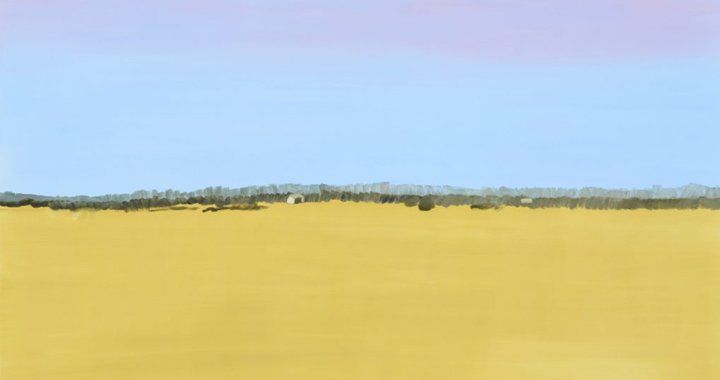
Baltic exhibition guide
February
TALLINN
Le Corbusier and Alvar Aalto. Photographs by Jari Jetsonen
Estonian museum of architecture
18 January till 15 March
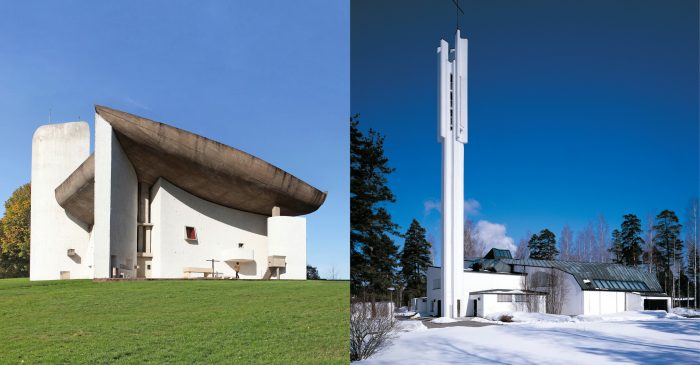
Museum presents the works of two giants of 20th-century architecture, Le Corbusier and Alvar Aalto, as seen through the lens of Jari Jetsonen. Jetsonen is a recognised Finnish photographer, who has been photographing Alvar Aalto’s architecture for over 20 years. As a dedicated photographer of architecture he became fascinated by the points of contact and similarities in the forms and ideas in both the buildings and thinking of the two seemingly oppositional architects. What becomes important here is the point of view of the artist and the way he sees buildings.
Le Corbusier’s new white architecture made a lasting impression on the young Alvar Aalto in summer 1928, when the architect first travelled to Paris with his wife Aino Aalto. This trip opened his eyes to Modernism. At the time, Aalto never met Le Corbusier; however, he did get to know his work, such as the newly completed Villa Stein in Garches. It is the same international functionalism that inspired the best known works by Aalto from that period, like the building for the Turun Sanomat newspaper and the Paimio Sanatorium. Later, the two men met on the international architecture scene several times, although, they ended up taking very different creative paths – one is often known as a rigid rationalist and theorist, the other as a creator of emotional spaces, inspired by landscape and culture. Jetsonen’s view of their work shows that such classifications are relative and more than simply the personas of the two architects, the autonomy of architecture and general spatial qualities such as light and shadow, the positioning of the architectural volumes, emerging views, connection to place and nature are also highlighted. Images, mostly juxtaposed in pairs, are simultaneously specific and universal, while singing with praise for the ability of the classics of modern architecture to remain captivating and relevant even half a century later. In writing the accompanying text for the exhibition, Juhani Pallasmaa, one of the best-known Finnish architecture theorists, compares the two men, and states that as an architect, author and person, Le Corbusier played a significant role in shaping modern architecture and culture. However, Alvar Aalto’s biological, psychological and empathic way of thinking that focuses on “little man” has so much more to offer in today’s world, considering the uncertainty of our future.
Ede Raadik “The Best You Can Ever Be”
Tallinn City gallery
14 February till 29 March
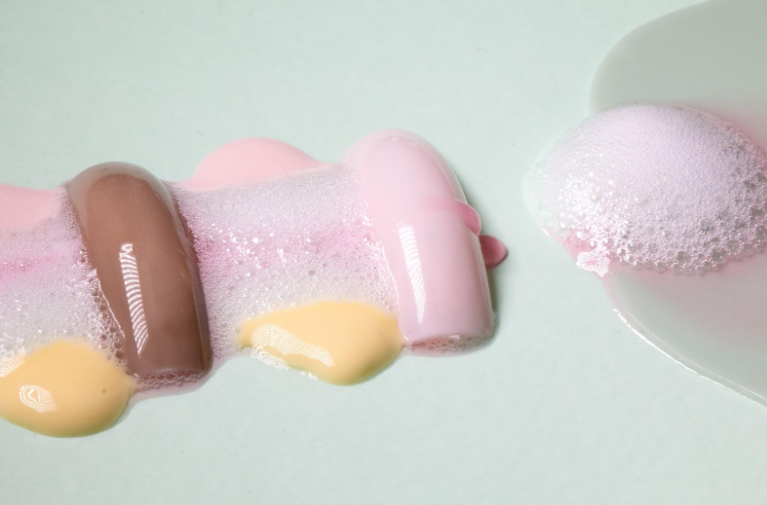
Throughout her career as a feminist conceptual artist, Ede Raadik has employed socially conscious installations as a tool to engage the world we inhabit. From a “Menopause Club” inspired by the range of species who experience this biological process, to the quiet workplace drama of female exploitation reflecting the challenges of living in Estonia, Raadik has found dark humor to be a generative and poetic rendering of social constructs. For this exhibition, she continues this line of inquiry by adapting the format of an open space for healing and empowerment to address issues of pain, pleasure and sexual well-being through the lens of advertisements and beautification products. She takes advantage of the assumption that the media cultures regulating women’s bodies are supposedly objective, when in fact they are often built on profoundly patriarchal rules that naturally favour the biology of some women over others, while capitalizing on their pain and insecurities. For a different, more equitable tomorrow, these patriarchal norms must be revised in order to support a radically inclusionary future.
The exhibition is part of Tallinn Art Hall’s 2020 thematic focus on feminism in the 21st century, highlighting critical issues confronting women today. Maria Kapajeva, Flo Kasearu, Laura Kuusk, Ede Raadik and Maria Valdma will stage solo exhibitions dealing with complicated narratives that go beyond what is regarded as “women’s issues” such as the politics of care and the body, the impact of technology on everyday life, violence and trauma, labour and poverty, as well as fertility and decay. These topics nonetheless have a very powerful impact on women’s lives. These artists will use the language of contemporary art to infuse a sense of urgency to engage with visual politics that moves between the female body and the spheres of public discourse.
RIGA
Madara Neikena “Volatile. Paintings”
Daugava gallery
22 January till 22 February

From 22 January till 22 February a solo show “Volatile. Paintings” by Madara Neikena is on view at Daugava gallery in Riga.
The artists says: “Fragile moments of light, peacefully flickering and disappearing on the horizon in the infinite distance, until in the universe comes a moment to be again at a certain hour and time – when the day goes and comes again. The process of painting is fundamental to me. Contemplation, cognition and creation – the process of visually representing feelings. It is fundamental to adapt. I consciously paint in an intuitive way. Over the course of time I have realized that all that I wish to say through painting is right here, in front of me. That, which I paint, depends on the time and space, which I inhabit. My presence is fundamental. Painting is like aspiring to something more real, something that cannot be said through words alone… (In the context of the works on view in this exhibition, and perhaps in painting altogether) – highlighting the significance of light … in light and in darkness more or less there is a necessity for light.”
Sixties: view of the city
Latvian Museum of Architecture
29 January till 20 March
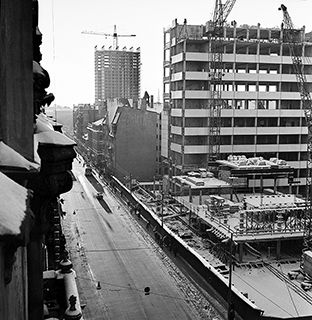
From January 29 till March 20, an exhibition entitled “Sixties: a view of the city” is on view at the Latvian Museum of Architecture. The exhibition offers an opportunity to look at the city as it was in the 1960s, through the prism of photograph. The photographer's message differs from the architect's view to the fact that the photographer captures the city in its context, seeking to focus on the most characteristic details, highlighting the most relevant from the surrounding environment. But both photographers and architects are brought together by the style and marks of the era, a common sense of proportions and aesthetic preconceptions.
The photographs in the exhibition represent the post-war modernism in architecture, the new neighbourhoods explaining geometry and simple volumes of the 1960s. The concept of “sixties” is considered extended beyond a given decade as a modernist project that started in the 1950s and continues to exist in the following years.
Two shows at Kim? Contemporary Art Center
6 February till 29 March
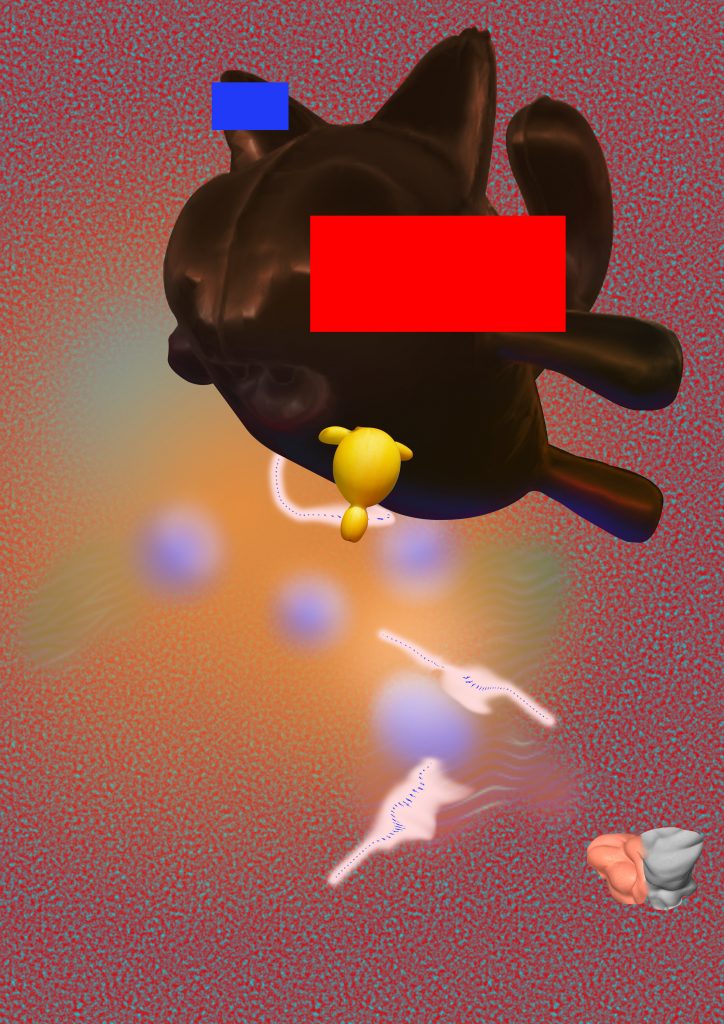
From February 6 till March 29 solo shows by Atis Jākobsons and Līva Rutmane will be on view at Kim? Contemporary Art Center.
Atis Jākobsons in his solo show focuses on the grid as an invisible but present structure that twists phenomena (as well as ideas and gestures). In his exhibition, Jākobsons is using a variety of techniques to create a multi-faceted composition. The artist says: ”Form is emptiness and the very emptiness is form; emptiness does not differ from form, form does not differ from emptiness; whatever is form, that is emptiness, whatever is emptiness, that is form, the same is true of feelings, perceptions, impulses, and consciousness,” (from Heart Sutra, Mahayana Buddhism.). Quantum light grid before the big bang. Work with the system of the grid as submitting to the law of universal forces. The path from the wandering of the subjective mind to cosmic and fundamental structures. Simultaneous awareness of form and formless.”
Artist and curator Kaspars Groševs writes: “Needle in a haystack. That’s how Google translates it. It’s somewhere beyond reach, floating in the air at night. It’s a well-kept mechanism, bound to grind its maintainer. I talk to Līva’s music more often than with herself, I talk with wood chips. It’s almost saut dans le vide, except the void is still shaping up and growing, living as bacteria on a white cube’s concrete floor. For now, let’s hide. “
Līva Rutmane (born 1984) graduated Latvian Academy of Art, Graphic Art department (MA). Usually works with large scale drawings and small plastic objects. Last solo show “A cake for Līva” at gallery LOW (2017). Takes part in the artist band “Klīga”. Participated in the group show “Blocker” at gallery Alma (2017). In case the activities turn insignificant, Līva practices self-publishing, the most recent work at Riga Zine Fest “Darbiņš” (2018).
Ēriks Apaļais “Family”
Latvian National Museum of Art
7 February till 29 March
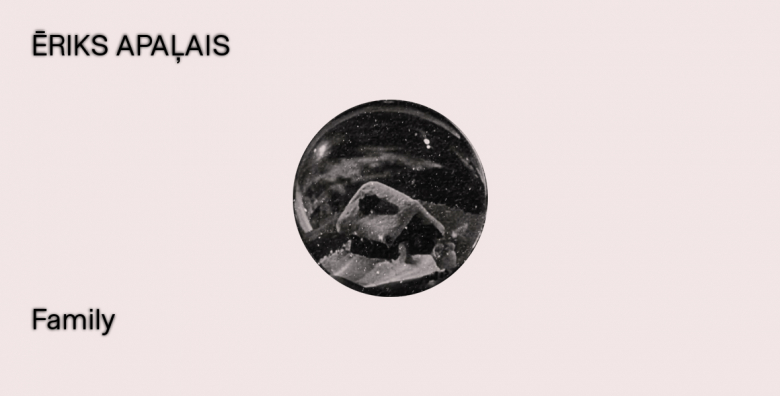
The exhibition will be a survey of the artist’s works to date and will be split up into five distinct chapters. The first part, or Prelude, will present his little-seen early paintings created in the latter part of the 2000s. The second part of the exhibition will include a number of his enigmatic letter paintings. Subsequently Apaļais has become known for his signature sparse, monochrome colour fields where figures and objects float in space; and for his allusive and elliptical narratives, which unfolds on the basis of minimal pictorial ‘clues’. This stylistic distinction unfolds boldly in the next section, Diaries from Earth, which feature earthly objects levitating in what appears to be the blackness of outer space. But is it? The meaning underlying Apaļais’ paintings is not easy to determine, and this is precisely what makes his work so intriguing. The artist provides us clues, but it is up to us to decipher what we see. The only cue Apaļais provides is a hint into an autobiographical domain, hence also the title of the exhibition Family. From then on, it is up to the viewer to create meaning, to fill in the semantic gaps of voided memory. Finally, the artist will present a new series of work, Tukums–Tomsk (2019–2020) which digs further into the past, and into both family and collective history, and which re-corporates colour into the canvas. With this body of work on view for the first time all together – Apaļais demonstrates the subtle manner in which he navigates the slippery territory of memory and the past. One could say that he manages to achieve the painterly equivalent of what Leo Strauss has called “esoteric writing” in reference to the written word, that is, an oblique manner of communication which eschews both linear narrative and literal description. The exhibition will conclude with a dreamy, immersive colour-saturated environment which will include both a video and painting installation that brings the exhibition full-circle. It will also include a series of footnotes, or reference points, that have been seminal for the artist’s practice, including film excerpts by Andrej Tarkovsky, Orson Welles, video by Marcel Broodthaers and work of Vija Celmins.
The exhibition is designed by Rihards Funts. The scenography for the Prelude has been designed by Golf Clayderman. The exhibition is curated by Katerina Gregos.
Džemma Skulme “Her Painting”
Latvian National Museum of Art
8 February till 5 April

The exhibition Džemma Skulme. Her Painting was planned for late 2018 with active participation of the artist herself. Time has intervened to make us complete this task with Džemma no longer around. The exhibition is dedicated to the painting of Džemma Skulme – the artist's great passion, love, work, meaning and play, a space for both conversing with herself and addressing the public. It highlights aspects of Džemma Skulme's art, which not only describe her own biography, but also the history of Latvian art. The exhibition is a unique opportunity to see Džemma Skulme's abstract paintings, produced in the summer of 2019, as well as fragments of her notes, which were important to the artist's creative process. Until the very end, each idea for the painter meant finding a solution to a task, and the new works are devoted to the materiality and independence of paint. The exposition includes paintings from the group of collages, so important to the artist, which talk about times of change – Caryatids or Notes on History. The paintings and documents give an insight into the volume of information involved in the creation of the content and form of the works made at the turn of the 20th and 21st centuries. The exhibition also presents the most outstanding examples of Džemma Skulme's monumental figural painting, which contributed significantly to the development of modern painting during the Soviet period and beyond.
VILNIUS
Kaspars Podnieks “Coming Home”
(AV17) Gallery
31 January till 5 March

From 31 January till 5 March a solo show by Latvian artist Kaspars Podnieks, entitled “Coming Home” is on view at (AV17) Gallery. The artist combines photography, installation, video and environmental art in his artistic practices. He has been working in the art sphere for two decades and has already gained international recognition. In 2013 Podnieks represented Latvia at the 55th Venice Biennale together with Krišs Salmanis. In the exhibition “Coming Home”, Kaspars Podnieks continues his long-year creative research on the topics of tradition, community and identity. Presented photographs and videos from the artist’s native Drusti village refers to its people’s everyday life and formation of a small town’s cultural identity. Countryside images contrast the authentic city bus stops, which symbolize stopping in time and space. One of the stations is located in Totorių street near the gallery, this way expanding its boundaries and connecting it to the public environment. However, the stops balance between reality and illusion thus creating a surreal sense in the spectator’s mind. The past and the future meets in the stations and fuses in one’s mind. From here you can start going further, but first you are invited to remember where you came from. All of Podnieks’ works are connected to his native land of Drusti. They become motifs which allude to the person’s origin, identity and status. The symbols of homeland are significant to the artist nevertheless they create associations to the spectators by reminding them of their provenance. The artist’s research on village and its people’s daily routine includes the social and political aspects of society as well as the remaining signs of the post-soviet culture. By constantly comparing symbols of different lifestyles, Podnieks reveals the features of both, conservative and modernizing society, at the same time highlighting the core human values.
Are We Closing? Open Call
Contemporary Art Centre
2020 February

Before saying goodbye to the Contemporary Art Centre spaces awaiting serious renewal, we would like to invite artists, curators, writers, various producers and enthusiasts to take part in one of the last projects of this CAC phase. CAC used to imagine itself as an airport of ideas; however, our famous building will soon close and we will continue our programme without it for at least a couple of years. Yet as one choreographer has once said, people often imagine themselves as airports, when it would be in fact much more interesting to imagine ourselves as airplanes. We would have more freedom to choose what to do, where to be and where to take off from, and we could change our minds at any time. We would still have to choose, but we’d be choosing all the time and from many more options. It’s a kind of radical uncertainty, which perhaps works even better in an exhibition or on stage than in real life. Slightly infected with it we would like to make an experiment before we temporarily leave our airport: we would like to invite anyone and everyone to propose ideas, projects, events and processes for an exhibition we are planning to open in February 2020. It may be existing artworks or ideas (realised or unrealised, your own or someone else’s) or an opportunity to do something new. Something that seems important, interesting to share or to experience with others. This is an invitation to talk and figure out what is possible to show and do.
Don’t hesitate to get in touch:
Asta Vaičiulytė: asta@cac.lt, +370 5 2616070
Audrius Pocius: audrius.poc@cac.lt, +370 6 8265010
Julija Fomina: julija@cac.lt, +370 6 8269174
Neringa Bumblienė: neringa@cac.lt, +370 5 2120052
Ūla Tornau: ula@cac.lt, +370 5 2120052
Virga Januškevičiūtė: virginija@cac.lt, +370 6 1819216
Daria Melnikova “Date Night”
Vartai gallery
6 February 13 March
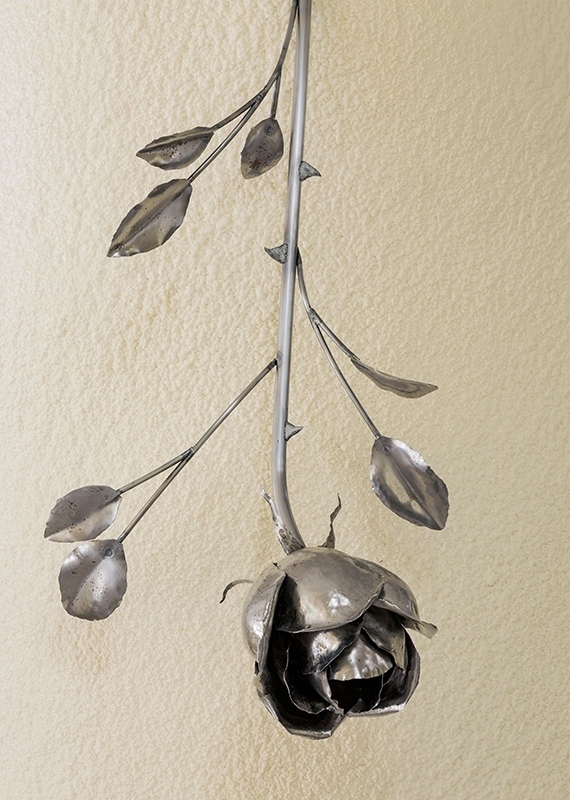
Date Night, a solo exhibition by Latvian artist Daria Melnikova, is set as a café in which her drawings, collages, sculptures and objects from various periods act as the cafe’s inventory and decorative elements. The exhibition takes the visitor on a visual journey through the motifs of different historical art styles and their pastiches that could be found in furnishing departments of hardware stores, interiors of corporate and private spaces. By blending craftmanship and the pure decorativeness of fine arts together with eclectics of our post-everything condition, Melnikova’s works raise questions about escapism in contemporary art, artists social image, labour, leisure and sources of inspiration. Date Night is a new cafe in town. It is also an exhibition about the ability to make art while doing something else. Daria Melnikova (b. 1984) lives and works in Riga. She has held solo shows at Karlin Studios in Prague (2019), PLATO in Ostrava (2019), Kulturfolger in Zurich (2018), Kim? in Riga (2017, 2014, 2011), ISSMAG gallery in Moscow (2017) and Vita Kuben in Umeo (2014), and has participated in group shows at KHB in Bratislava (2019), Kiasma in Helsinki (2018), Rupert in Vilnius (2018), Silberkuppe in Berlin (2017), Art in General in New York (2015), Garage Museum of Contemporary Art in Moscow (2014) and others. Daria’s work forms part of the Museum of Contemporary Art Kiasma collection.